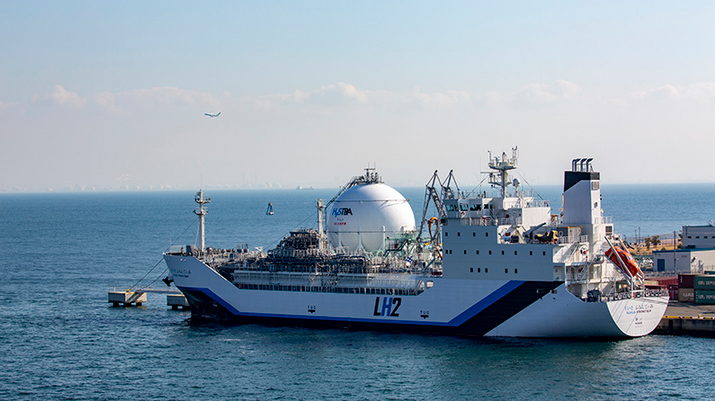3.3 Hydrogen Transportation
| Website: | Hamburg Open Online University |
| Kurs: | Green Hydrogen |
| Buch: | 3.3 Hydrogen Transportation |
| Gedruckt von: | Gast |
| Datum: | Samstag, 29. November 2025, 08:12 |
Beschreibung
The reasons why the import of green energy will play a decisive role in supplying Germany and other industrialised countries in the future were explained in the first section of this chapter. To realise the import of large amounts of green energy from regions with a particularly high renewable energy potential to Germany, the transport of green, hydrogen-based energy carriers is necessary. In addition, transport infrastructures are also needed to supply individual consumers and connect them to storage facilities. In this section, the most important options for the transport of hydrogen and its derivatives are presented.
Transportation
Transportation via trucks and trains
The transport of gaseous hydrogen is currently mainly carried out with the help of so-called tube trailers. Thereby, compressed gaseous hydrogen is stored in bundles of tube-shaped pressure tanks. These tube bundles are installed on truck trailers but can also be used for hydrogen transport by freight trains. In recent years, the maximum transport capacity of a single truck could be significantly increased by raising the storage pressure up to 500 bar (see illustration below). If the transport capacity needs to be increased further, liquid hydrogen trailers equipped with a cryo tank are a possible option. Due to the significantly higher volumetric energy density, the amount of energy transported per trailer can be almost quadrupled by using liquid hydrogen.


Building an infrastructure for hydrogen - Example
In the following you will see six exemplary projects in Northern Germany, that tackle the ramp-up of an infrastructure for storage and transportation of hydrogen and / or it's derivates. All projects are currently in the planning phase and have not yet been implemented.